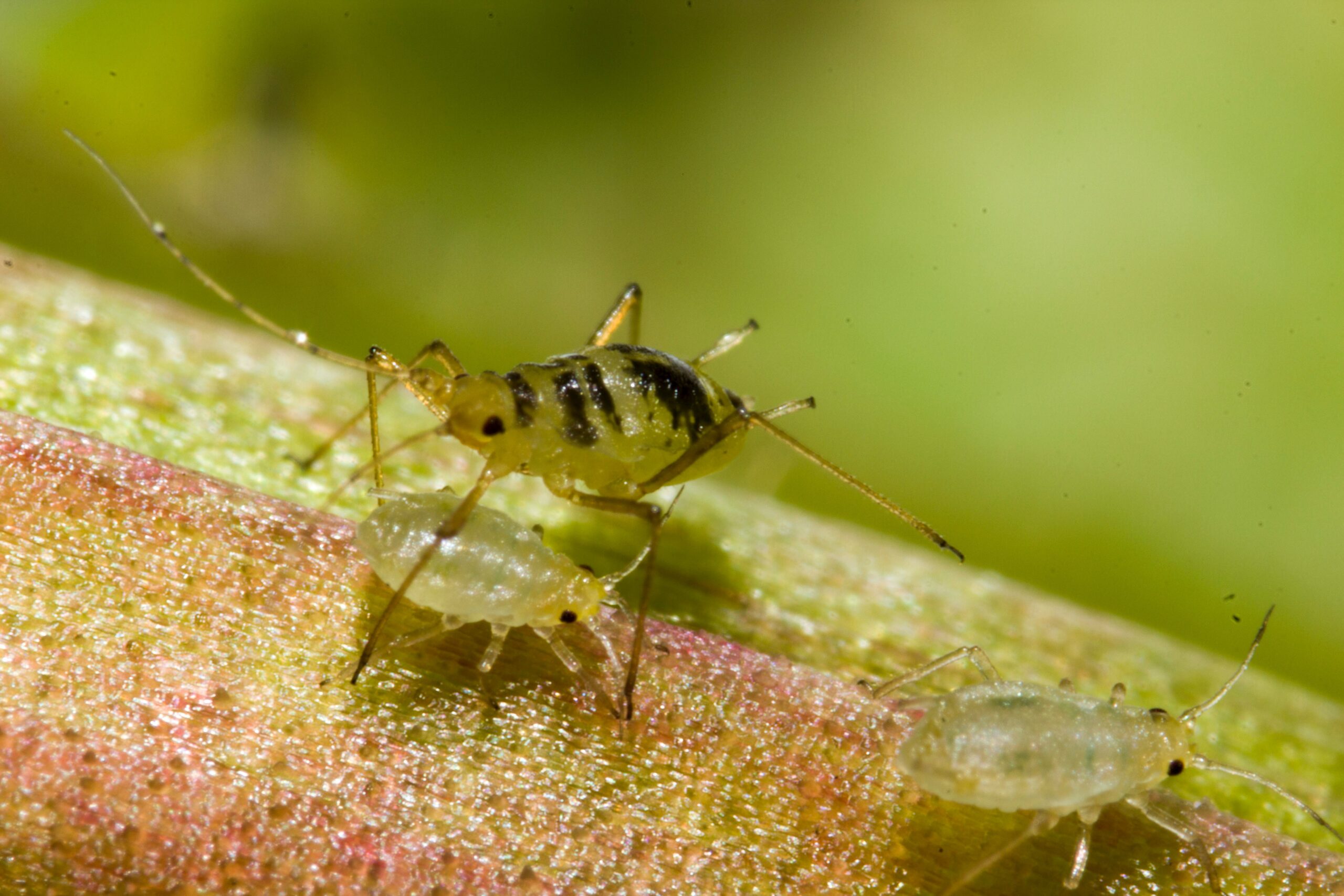Isolate, Identify, Remove. Dealing with pests on indoor plants can be frustrating, but there are several effective methods you can use to get rid of them. Here are some steps you can take:
- Identify the pests: Proper identification of the pests on your indoor plants is crucial because different pests may require specific treatment methods. Observe the pests closely and research their characteristics or consult with a local plant expert or horticulturist if needed.
- Isolate infested plants: If you have multiple indoor plants, it’s essential to isolate the infested plants from the healthy ones to prevent the pests from spreading. Place the affected plants away from others until the pest problem is resolved.
- Manual removal: For larger pests, such as slugs, snails, or caterpillars, you can manually pick them off the plants and dispose of them. Use gloves or tweezers if necessary.
- Water spray: A strong blast of water can be effective for dislodging and removing small pests, such as aphids, spider mites, or mealybugs. Use a spray bottle or hose to direct a forceful stream of water onto the affected plants, focusing on the undersides of leaves and the areas where pests tend to gather.
- Neem oil or insecticidal soap: Neem oil and insecticidal soap are effective organic solutions for controlling a wide range of pests. Follow the instructions on the product label for proper application and dosage. These treatments work by suffocating pests or disrupting their life cycles.
- Natural predators: Introducing beneficial insects, such as ladybugs or predatory mites, can help control pest populations. These natural predators feed on common indoor plant pests and can provide long-term pest management. You can purchase them from garden supply stores or online.
- Sticky traps: Sticky traps, available in various sizes and colors, can be placed near infested plants to capture flying insects like fungus gnats, whiteflies, or fruit flies. The pests get stuck on the sticky surface, reducing their population.
- Cultural practices: Maintaining a healthy indoor environment for your plants can help prevent and control pest infestations. Ensure proper watering practices, adequate sunlight, and good air circulation. Avoid overwatering, as it can create a conducive environment for pests.
- Regular monitoring: Regularly inspect your indoor plants for signs of pests or damage. Early detection allows for swift action and prevents the problem from worsening.
- Persistent treatment: Pests may require repeated treatments or a combination of methods to completely eradicate them. Be persistent and consistent in your efforts until the infestation is under control.
If the pest problem persists or worsens despite your best efforts, consider seeking advice from a professional pest control service or consulting with a local plant expert who can provide targeted recommendations based on the specific pests and plants involved.
What Causes Pests to Become Attracted to Plants?
Pests are attracted to plants for various reasons. Understanding the factors that can attract pests to plants can help you take preventive measures and manage infestations more effectively.
Here are some common reasons why pests become attracted to plants:
- Food source: Pests are often attracted to plants because they provide a food source. They may feed on the plant’s leaves, stems, flowers, fruits, or sap. Different pests have specific preferences for certain plants or plant parts.
- Weak or stressed plants: Weak or stressed plants are more susceptible to pest infestations. Factors such as inadequate light, improper watering, nutrient deficiencies, or poor growing conditions can weaken plants, making them more attractive to pests.
- Moisture and humidity: Excessive moisture or high humidity levels can create a favorable environment for pests, especially fungal diseases and insects like fungus gnats. Overwatering or poor drainage can contribute to these conditions.
- Lack of airflow: Poor air circulation around plants can lead to increased humidity, which can attract pests. It’s important to ensure proper spacing between plants and provide adequate ventilation to discourage pest infestations.
- Plant debris and hiding places: Accumulated plant debris, such as fallen leaves, dead branches, or decaying organic matter, can attract pests. These provide hiding places and breeding grounds for insects, slugs, or snails.
- Unhealthy neighboring plants: If nearby plants are already infested with pests, they can attract pests to your other healthy plants. Pests may move from plant to plant, spreading the infestation.
- Lack of biodiversity: A lack of biodiversity in your garden or indoor space can contribute to pest problems. Having a variety of plant species and beneficial insects can help maintain a balanced ecosystem and reduce the likelihood of pest outbreaks.
- Environmental conditions: Certain pests are more active or thrive under specific environmental conditions. For example, warm temperatures can accelerate the reproduction and activity of some pests, while others may prefer cooler or humid environments.
To minimize pest attraction, consider implementing the following practices:
- Choose healthy and pest-resistant plant varieties.
- Maintain proper plant care, including watering, lighting, and fertilization.
- Promote good airflow and ventilation around your plants.
- Regularly clean up fallen leaves, debris, or dead plant material.
- Practice crop rotation in outdoor gardens to disrupt pest life cycles.
- Introduce beneficial insects or natural predators that can help control pest populations.
- Monitor your plants regularly for signs of pests and take prompt action if infestations are detected.
By being proactive in plant care and creating unfavorable conditions for pests, you can reduce the likelihood of attracting pests and minimize the need for intensive pest control measures.
What Kind of Pests are Harmful to Houseplants?

Several pests can be harmful to houseplants. Here are some common pests that can cause damage to indoor plants:
- Aphids: These small, soft-bodied insects feed on plant sap, causing distorted growth, curling leaves, and sticky residue (called honeydew). They reproduce rapidly and can quickly infest a plant.
- Spider mites: These tiny arachnids are common indoor plant pests. They feed on plant fluids and cause yellowing leaves, stippling (tiny dots), webbing, and overall decline in plant health.
- Mealybugs: Mealybugs are small, soft-bodied insects covered in a cottony, waxy substance. They feed on plant sap and cause stunted growth, yellowing leaves, and honeydew secretion. They are often found in leaf axils, joints, or undersides of leaves.
- Scale insects: Scale insects appear as small, raised bumps on plant stems or leaves. They suck sap from plants and can cause yellowing, stunted growth, and leaf drop. Some scales excrete honeydew, leading to sooty mold growth.
- Fungus gnats: These small, flying insects lay their eggs in the moist soil of houseplants. The larvae feed on organic matter and plant roots, causing root damage, poor plant growth, and yellowing leaves.
- Whiteflies: Whiteflies are tiny, winged insects that congregate on the undersides of leaves. They feed on plant sap and cause yellowing leaves, leaf drop, and the secretion of sticky honeydew.
- Thrips: Thrips are slender, tiny insects that feed on plant tissues by puncturing and sucking out the cell contents. They cause distorted growth, silvering or bronzing of leaves, and dark fecal deposits.
- Caterpillars: Certain species of caterpillars, such as those of moths or butterflies, can feed on indoor plants. They chew on leaves, creating irregular holes or extensive damage if infestations are severe.
It’s important to note that different regions and specific plant species may have additional pests that can be harmful. Proper identification of the pest is crucial to determine the most effective control methods.
If you notice any signs of pest infestation on your houseplants, it’s essential to take action promptly to prevent further damage. Consider using appropriate pest control measures such as manual removal, water sprays, insecticidal soaps, neem oil, or introducing beneficial insects to manage the infestation effectively.
Are Pests Safe to Leave on Houseplants?
No, It is not recommended. In general, it’s not advisable to leave pests on houseplants. While some pests may cause minimal damage and may not immediately kill the plant, they can multiply rapidly and potentially lead to more significant issues. Here are a few reasons why it’s best to address pest infestations on houseplants:
- Damage to plant health: Pests can weaken and damage your houseplants over time. They feed on plant tissues, sap, or roots, which can lead to stunted growth, yellowing leaves, leaf drop, or even plant death. If left unchecked, pests can cause severe damage and may be more challenging to control later on.
- Spread of infestation: Pests can quickly spread to other plants in close proximity. If you have multiple houseplants, an infestation on one plant can easily transfer to others, leading to a wider problem. Taking action to control pests promptly helps prevent the infestation from spreading and affecting other plants.
- Risk of disease transmission: Some pests, such as aphids, whiteflies, or scale insects, can transmit plant diseases. The pests themselves may carry pathogens, or their feeding activities can create entry points for diseases to enter the plant. Treating the pest infestation helps reduce the risk of disease transmission and protects the overall health of your plants.
- Aesthetics and indoor environment: Pests on houseplants can detract from the beauty of your indoor space. Visible pests, webs, sticky residue, or damage to leaves can make your plants look unsightly. Additionally, certain pests, like fungus gnats or mealybugs, can be a nuisance in the indoor environment.
- Pest population control: Addressing a pest problem early on makes it easier to control the population and prevent it from becoming more challenging to manage. Some pests reproduce quickly, and delaying treatment can lead to exponential growth, making eradication more difficult.
It’s essential to take appropriate measures to control and eliminate pests on houseplants as soon as you notice their presence. Follow effective pest control methods, such as manual removal, water sprays, insecticidal soaps, or organic treatments, to minimize the impact on plant health and prevent further issues.
Do Pests Transfer Between my Houseplants?
Yes, pests can transfer between houseplants, especially if they are in close proximity to each other. Pests can move from one plant to another through various means, such as crawling, flying, or by hitching a ride on clothing, pets, or tools. Here are a few ways pests can transfer between houseplants:
- Crawling pests: Pests like aphids, mealybugs, or scale insects can crawl from one plant to another, especially if the plants are in direct contact or situated close together. They can move along stems, leaves, or branches to infest nearby plants.
- Flying pests: Insects such as whiteflies or fungus gnats can fly from one plant to another. They can easily move between nearby plants and infest them. Open windows, doors, or ventilation systems can also facilitate the entry of flying pests into your indoor space.
- Transferring through contact: When you handle or touch an infested plant, pests can transfer onto your hands, clothing, or gardening tools. If you then handle another plant without washing or cleaning, you may inadvertently introduce the pests to the new plant.
- Pets: Pets, such as cats or dogs, can unknowingly carry pests from one plant to another. Pests can attach themselves to their fur or hide in their bedding. It’s a good practice to regularly check pets for any signs of pests and keep them away from infested plants.
- Cross-contamination during care: If you use the same tools, such as pruning shears or watering cans, on multiple plants without cleaning them in between, pests can be transferred from one plant to another. Always sanitize or clean your gardening tools to prevent the spread of pests.
To minimize the transfer of pests between houseplants, it’s important to take preventive measures:
- Isolate infested plants: If you identify an infestation on a particular plant, promptly isolate it from other plants to prevent the pests from spreading. This can help contain the problem and protect your other plants.
- Regularly inspect plants: Regularly check your houseplants for any signs of pests. Look for visible pests, webs, sticky residue, or any other unusual signs. Early detection allows for prompt action and prevents the infestation from spreading.
- Maintain plant health: Healthy plants are generally more resistant to pests. Provide proper care, including adequate light, proper watering, and appropriate fertilization, to keep your plants in optimal health.
- Clean and sanitize: Clean your gardening tools between plants to avoid transferring pests. Regularly clean plant containers, saucers, or any other plant-related items to prevent the buildup of pests or their eggs.
By being vigilant and taking preventive measures, you can reduce the chances of pests transferring between your houseplants and minimize the risk of widespread infestations.
My Plant looks Unhealthy, is it because of Pests?
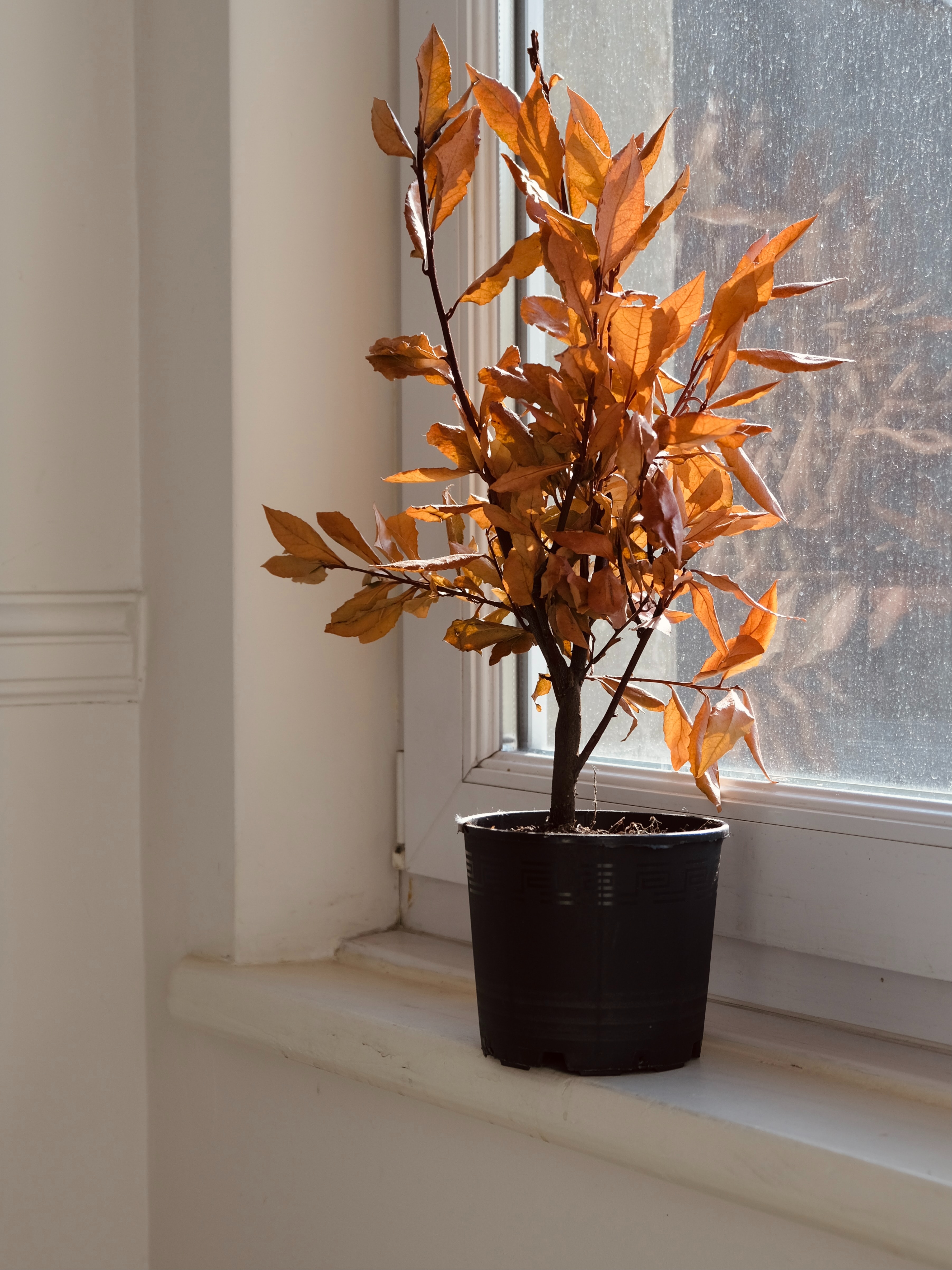
While pests can be a common cause of plant health issues, they are not the only factor that can make a plant look unhealthy. There are several other factors that can contribute to the decline of a plant’s health. Here are some common reasons why a plant may appear unhealthy:
- Lack of sunlight: Insufficient light can result in weak or leggy growth, pale or yellow leaves, and overall poor plant health. Different plant species have varying light requirements, so it’s important to ensure your plant is receiving the appropriate amount of light.
- Overwatering or underwatering: Incorrect watering practices can negatively impact plant health. Overwatering can lead to root rot, wilting, or yellowing leaves, while underwatering can cause wilting, dryness, or leaf drop. Finding the right balance of moisture for your specific plant is crucial.
- Nutrient deficiencies or imbalances: Plants require essential nutrients to thrive. Lack of nutrients, such as nitrogen, phosphorus, or potassium, can manifest as yellowing leaves, stunted growth, or overall poor vigor. On the other hand, excessive fertilization can cause nutrient imbalances, leading to leaf burn or toxicity.
- Improper temperature or humidity levels: Plants have specific temperature and humidity preferences. Exposure to extreme temperatures, drafts, or prolonged exposure to dry air can result in stress, wilting, leaf browning, or leaf drop.
- Soil quality: Poor soil quality, such as compacted soil, inadequate drainage, or improper pH levels, can impede root growth and nutrient uptake, leading to unhealthy plants.
- Disease or fungal infections: Plant diseases, such as fungal infections or bacterial pathogens, can cause various symptoms including leaf spots, wilting, discoloration, or abnormal growth patterns.
- Environmental stressors: Environmental factors like air pollution, chemicals, or toxins can adversely affect plant health. Additionally, physical damage to the plant, such as from accidental breakage or improper pruning, can impact its overall appearance and vitality.
While pests can be a potential cause of plant health issues, it’s important to consider all the other factors mentioned above when assessing the health of your plant. Examine your plant closely to look for any signs of pests, such as visible insects, webs, or sticky residue. If you suspect pests, take appropriate measures to address the infestation. If you don’t find any pests, evaluate other potential causes and adjust care practices accordingly to promote the plant’s well-being. If the problem persists, consider consulting a local plant expert for further guidance.
What is the Safest ways to Remove Pests from Plants?
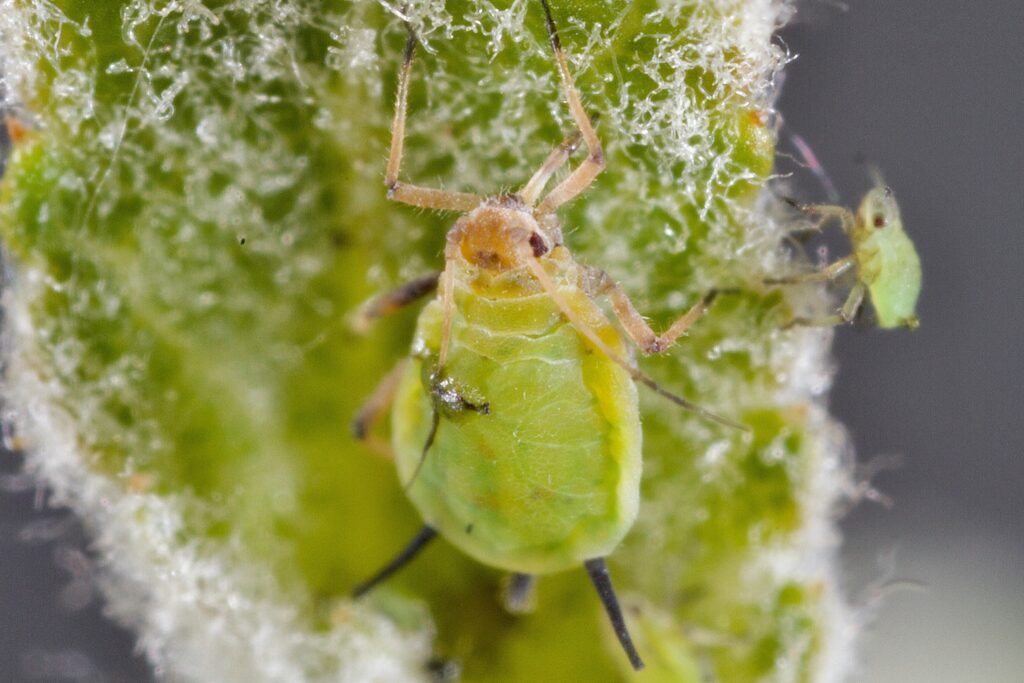
When it comes to removing pests from plants, it’s generally best to start with the safest and least harmful methods before resorting to stronger measures. Here are some safe and effective ways to remove pests from plants:
- Manual removal: For larger pests like caterpillars or snails, you can manually remove them from the plant by picking them off carefully and disposing of them away from your plants. Use gloves or tweezers if necessary.
- Water sprays: A strong blast of water can dislodge pests like aphids or spider mites from the plant. Use a handheld sprayer or a hose with a spray attachment to direct a forceful stream of water onto the affected plant parts. Make sure to cover the entire plant, including the undersides of leaves.
- Insecticidal soap: Insecticidal soaps are made from natural fatty acids and can be effective against soft-bodied pests like aphids, mealybugs, or whiteflies. Follow the instructions on the product and spray the affected plants thoroughly, targeting both the pests and the undersides of leaves.
- Neem oil: Neem oil is derived from the neem tree and has insecticidal properties. It can be effective against a wide range of pests, including aphids, mites, and scale insects. Dilute neem oil according to the instructions on the product and spray it onto the affected plants, ensuring good coverage.
- Beneficial insects: Introducing beneficial insects, such as ladybugs or lacewings, can help control pest populations naturally. These predatory insects feed on pests like aphids or mites. You can purchase beneficial insects from gardening stores or online and release them onto your plants.
- Horticultural oils: Horticultural oils, like dormant oil or summer oil, are lightweight oils that can smother and kill certain pests, including scale insects or mites. Follow the instructions on the product and apply it when the plant is not under stress, and the temperature is appropriate.
- Sticky traps: Yellow sticky traps can be effective in catching flying pests like fungus gnats or whiteflies. Hang the traps near the affected plants to attract and trap the pests. This method helps to monitor and reduce the population of flying insects.
It’s important to read and follow the instructions on any pest control products you use and avoid using stronger chemical pesticides unless absolutely necessary. Always test any treatment on a small portion of the plant before applying it to the entire plant to ensure it doesn’t cause any adverse effects.
Remember to monitor your plants regularly and be consistent with your chosen method of pest control. Repeat treatments may be necessary to eliminate or manage the pest population effectively. If the infestation persists or becomes severe, it may be helpful to seek advice from a local gardening professional or extension service for further guidance.
What effects do Pests have on Houseplants?
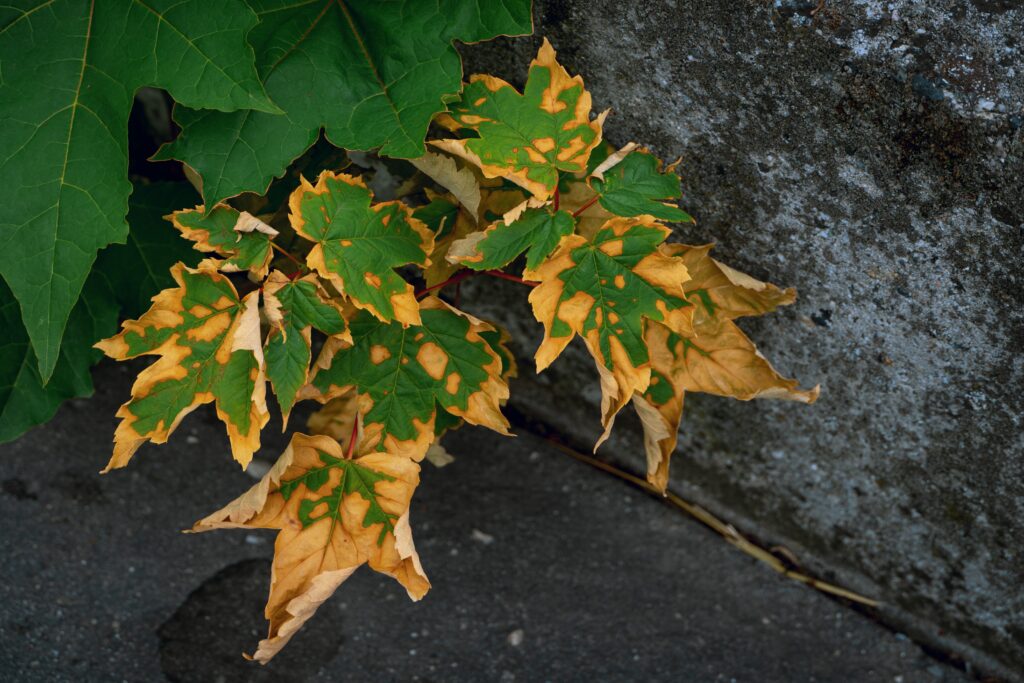
Pests can have various effects on houseplants, and their impact can vary depending on the type and severity of the infestation. Here are some common effects that pests can have on houseplants:
- Damage to plant tissues: Pests often feed on plant tissues, including leaves, stems, or roots. They can chew, suck, or pierce the plant to extract sap or nutrients. This feeding activity can cause visible damage such as holes, notches, or stippling on leaves, resulting in a compromised appearance.
- Stunted or distorted growth: Pests can disrupt the normal growth of houseplants. They may feed on the growing tips, causing deformities, curling, or twisting of leaves or stems. This can result in stunted growth and an overall unhealthy or unbalanced appearance.
- Yellowing or discoloration: Some pests, such as aphids or spider mites, can cause yellowing or discoloration of leaves. They extract plant sap, which can lead to nutrient deficiencies or imbalances, resulting in the loss of green pigmentation in leaves.
- Wilting or drooping: Pests can damage plant tissues and interfere with the transport of water and nutrients within the plant. As a result, houseplants may exhibit wilting, drooping, or sagging leaves. Prolonged infestations or severe damage can lead to plant decline or death.
- Leaf drop: Certain pests, like scale insects or mealybugs, can cause excessive stress on houseplants, leading to leaf drop. Infested leaves may yellow, wither, or prematurely fall off the plant. This can contribute to an overall sparse or bare appearance.
- Spread of diseases: Some pests can act as vectors for plant diseases, transmitting pathogens from plant to plant. The feeding activity of pests can create wounds or entry points for pathogens, increasing the risk of disease development and spread among houseplants.
- Reduced vigor and overall decline: Prolonged or severe pest infestations can result in reduced plant vigor and overall decline. Houseplants may exhibit poor growth, reduced flowering or fruiting, and a general lack of vitality. Weakened plants are also more susceptible to secondary infections or stress from environmental factors.
It’s crucial to address pest infestations promptly to minimize the impact on houseplants. Early detection, proper identification of pests, and effective control measures can help prevent further damage and maintain the health and appearance of your plants. Regular monitoring, proper cultural practices, and creating a favorable growing environment can also help prevent or minimize pest problems.
Are Pests on Houseplants Safe for Pets?
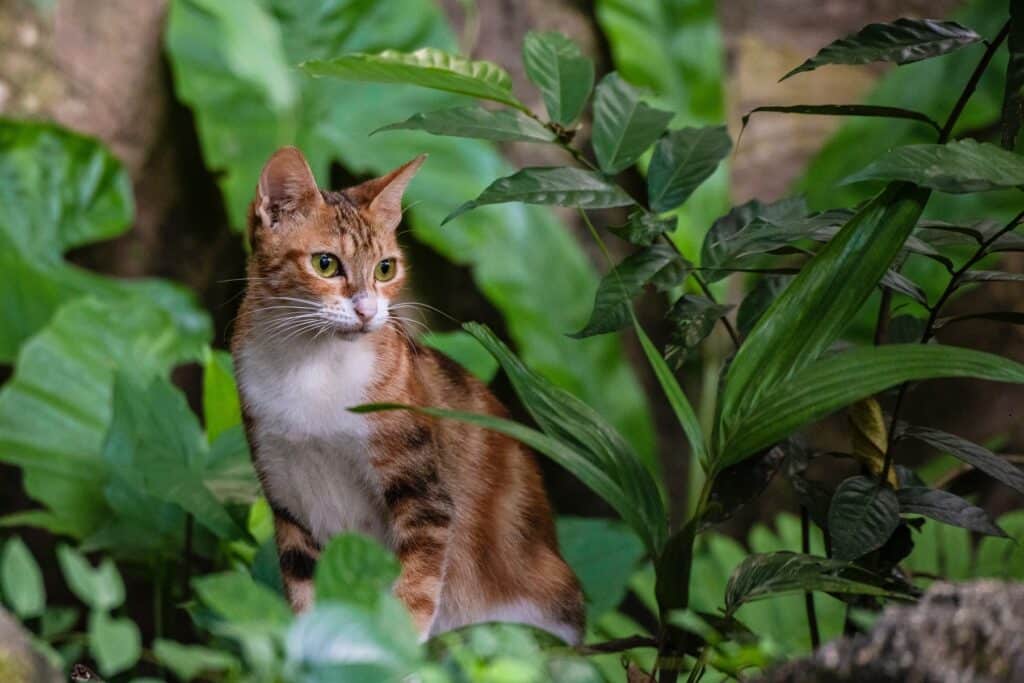
Pests on houseplants can pose risks to pets if ingested or if the pests themselves have harmful characteristics. While many pests on houseplants are generally harmless to pets, it’s essential to be cautious and take appropriate measures to ensure your pets’ safety. Here are a few considerations regarding pests on houseplants and their impact on pets:
- Toxicity of pests: Some pests, such as certain types of caterpillars or beetles, can have toxic properties if ingested by pets. It’s important to identify the specific pests and research their potential toxicity to pets. Contact your veterinarian if you suspect your pet has consumed a pest that could be harmful.
- Allergies or irritations: Pets, particularly cats or dogs, can have allergic reactions or skin irritations from contact with certain pests or their secretions. For example, some pets may be sensitive to the fine hairs of caterpillars or the irritating sap of certain pests. Monitor your pets closely if they show any signs of itching, redness, or discomfort after being in contact with houseplant pests.
- Pesticide exposure: Be cautious if you choose to use pesticides or insecticides to control pests on houseplants. Some chemical treatments can be toxic to pets if ingested or if they come into contact with treated plant surfaces. Read and follow the instructions on the pesticide labels carefully, and consider using pet-safe or organic alternatives whenever possible.
- Indirect risks: In addition to the pests themselves, there may be indirect risks associated with pest control methods. For example, using sticky traps to catch flying pests could potentially trap a curious pet’s paws or fur. Take precautions to keep pets away from traps or any other pest control measures you employ.
To keep your pets safe around houseplants and pests:
- Keep houseplants out of reach: Place houseplants in areas where pets cannot access them easily. Consider using hanging planters or shelves to keep plants at a safe height.
- Research pet-safe plants: When selecting houseplants, choose varieties that are non-toxic to pets. Many common houseplants, such as spider plants or Boston ferns, are considered pet-friendly and pose minimal risks if ingested.
- Regularly inspect plants: Routinely check your plants for any signs of pests and take action promptly to prevent infestations from spreading.
- Provide alternative distractions: Offer appropriate toys or chew items to keep your pets engaged and deter them from nibbling on houseplants.
If you notice any adverse reactions or concerns about your pet’s health related to houseplants or pests, consult with your veterinarian for guidance. They can provide specific advice based on your pet’s individual needs and circumstances.
Can Pests from Plants Transfer onto My Pets?
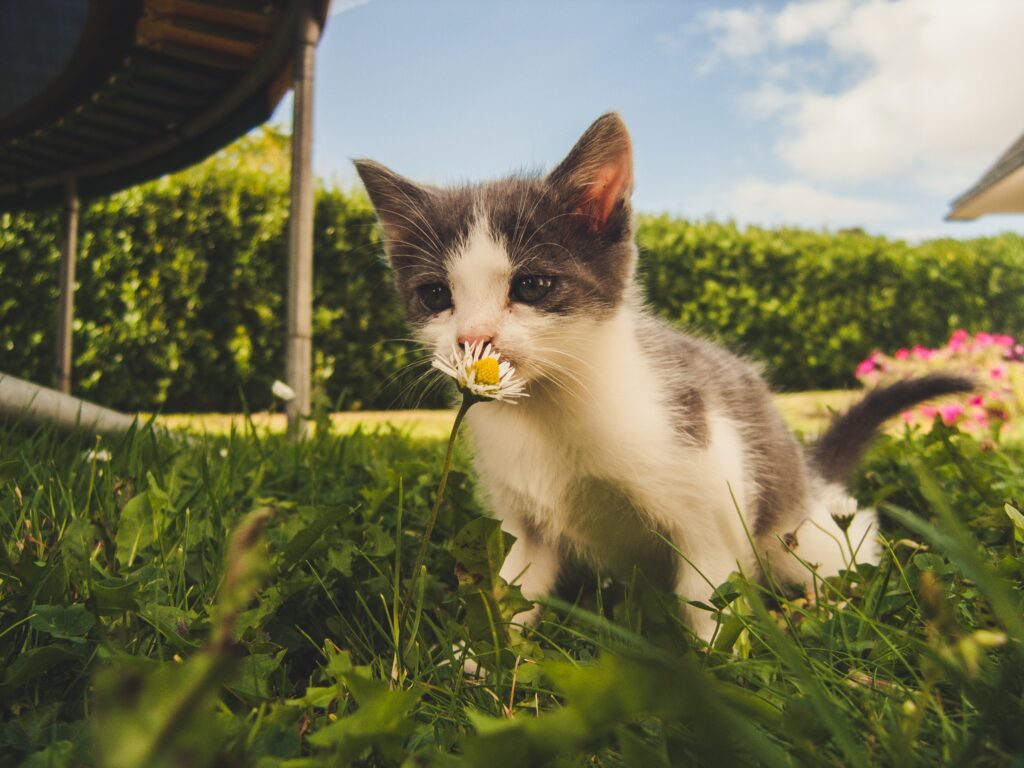
Yes, pests from plants can transfer onto pets, especially if they come into direct contact with infested plants or the pests themselves. Here are a few ways pests can transfer from plants to pets:
- Physical contact: Pets, such as cats or dogs, can come into contact with pests on plants while exploring or playing near them. Pests like aphids, scale insects, or mites can crawl or attach themselves to your pet’s fur or skin.
- Hitchhiking: Some pests, such as fleas or ticks, are known to hitchhike on animals, including pets. While these pests are not specific to plants, they can infest outdoor plants and transfer onto pets when they brush against or lie near infested vegetation.
- Ingestion: Pets may inadvertently ingest pests if they chew on infested plants or if the pests are present on plant parts that are easily accessible. Ingesting certain pests can potentially cause health issues or allergic reactions in pets.
To minimize the transfer of pests from plants to pets:
- Monitor your pets: Keep an eye on your pets when they are near plants, especially if you suspect the presence of pests. Discourage them from chewing or nibbling on plants.
- Regularly inspect your pets: Check your pets regularly for any signs of pests, such as fleas, ticks, or other external parasites. Look for visible pests, bites, itching, or skin irritations. If you notice anything unusual, consult your veterinarian for appropriate treatment.
- Maintain a clean environment: Regularly clean and maintain the area around your indoor and outdoor plants to reduce the presence of pests. Vacuuming or sweeping regularly can help remove any pests or debris that may have fallen from plants.
- Treat plants for pests: If you notice a significant pest infestation on your plants, it’s essential to take appropriate measures to control the pests. By addressing the pest issue promptly, you can minimize the risk of transfer to your pets.
- Use pet-safe pest control methods: When using any pest control products, ensure they are labeled as safe for pets. Avoid using pesticides or insecticides that may be toxic to animals. Consult with your veterinarian or a professional pest control service for pet-friendly pest control options.
By being vigilant and taking preventive measures, you can reduce the chances of pests transferring from plants to your pets. Regular grooming, preventive treatments for fleas and ticks, and a clean living environment can also help protect your pets from potential pest-related issues.
Can Pests from Plants Transfer onto My Children?
Pests from plants can potentially transfer onto children if they come into direct contact with infested plants or the pests themselves. Here are a few ways pests can transfer from plants to children:
- Physical contact: Children may touch or handle plants that are infested with pests. Pests like aphids, scale insects, or caterpillars can crawl onto their skin or attach to their clothing.
- Play areas: If infested plants are located in areas where children play, there is a possibility that pests may transfer onto them while they interact with the plants or sit or lie on the ground nearby.
- Ingestion: Young children, particularly infants or toddlers, may put plant parts or objects contaminated with pests into their mouths. Ingesting certain pests can potentially cause health issues or allergic reactions.
To minimize the transfer of pests from plants to children:
- Supervise children: Keep a watchful eye on children when they are around plants, especially if you suspect the presence of pests. Teach them not to touch or put plants in their mouths.
- Educate children: Teach children about the importance of not touching or eating plants without adult supervision. Help them understand the potential risks associated with pests on plants.
- Regularly inspect plants: Routinely check your plants for any signs of pests and take action promptly to prevent infestations from spreading. Keep infested plants away from areas where children spend a significant amount of time.
- Maintain a clean environment: Regularly clean and maintain the area around your indoor and outdoor plants to reduce the presence of pests. Remove fallen leaves or debris that may harbor pests.
- Use safe pest control methods: If you need to use pest control methods, choose products that are labeled as safe for children and follow the instructions carefully. Consider using organic or non-toxic alternatives whenever possible.
- Practice good hygiene: Encourage children to wash their hands thoroughly after playing near plants or in garden areas. This helps remove any potential pests that may have come into contact with their skin.
By implementing these precautions, you can help minimize the transfer of pests from plants to children. It’s important to create a safe and supervised environment for children to interact with plants, ensuring their well-being and reducing the potential risks associated with pests.
Should I Repot a Plant that has Been Infested with Pests?
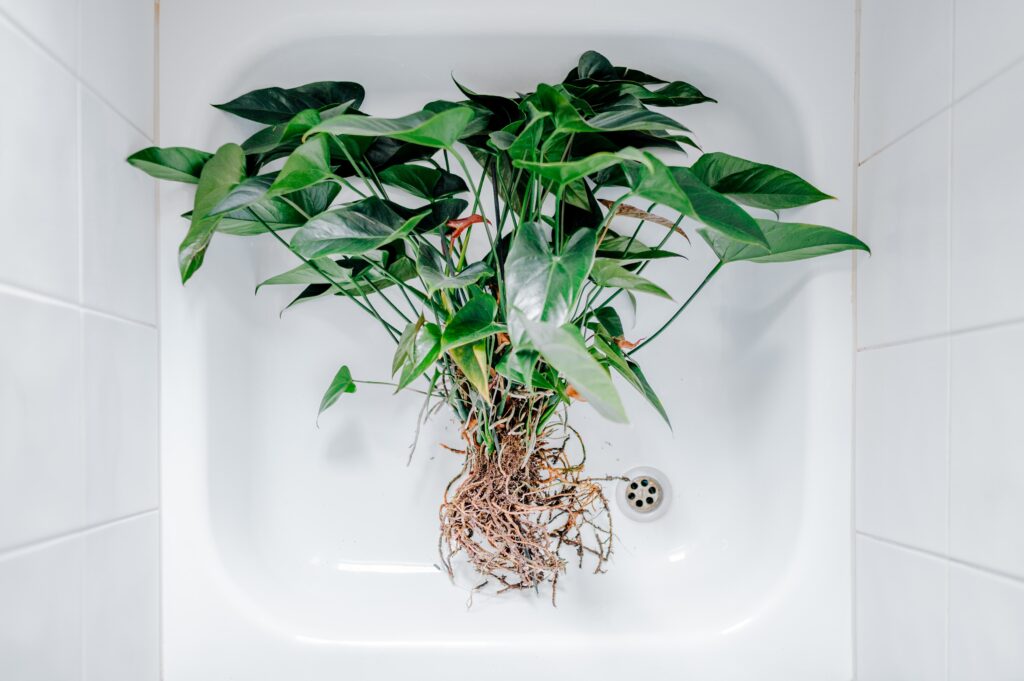
If a plant has been infested with pests, repotting can be a beneficial course of action in some cases. However, it’s important to consider a few factors before deciding to repot:
- Severity of infestation: Assess the severity of the pest infestation. If the infestation is mild and you are able to effectively control and eliminate the pests through other means, such as using insecticidal soap or natural remedies, repotting may not be necessary.
- Plant health: Evaluate the overall health of the plant. If the infestation has severely affected the plant’s health, such as causing extensive damage to the roots or resulting in significant leaf drop, repotting might be necessary to give the plant a fresh start and promote recovery.
- Root health: Check the condition of the plant’s roots. If the roots are severely damaged or if you suspect the presence of pests within the root system, repotting can help remove the pests and provide an opportunity to examine and address any root-related issues.
- Containment and prevention: Repotting can help contain the infestation and prevent it from spreading to other plants. By removing the plant from its current pot and providing fresh soil or a clean pot, you can minimize the risk of the pests persisting or transferring to other plants.
When repotting a plant that has been infested with pests, follow these steps:
- Choose a new pot: Select a clean pot that is appropriately sized for the plant, ensuring it has drainage holes to prevent waterlogging.
- Remove the plant from the old pot: Gently tap or loosen the sides of the pot to free the plant’s root ball. Be careful not to damage the roots during this process.
- Inspect the roots: Examine the roots for any signs of pests, damage, or rot. If you find pests or damaged roots, trim off the affected portions with clean and sterilized pruning tools.
- Clean the pot: Thoroughly clean and sterilize the old pot to eliminate any remaining pests or their eggs. Use mild soap and warm water, or a diluted bleach solution, to clean the pot. Rinse it thoroughly before reuse.
- Prepare fresh soil: Use fresh, well-draining soil appropriate for the specific plant’s needs. Avoid using soil from the infested pot or contaminated soil.
- Repot the plant: Place the plant in the new pot, making sure it sits at the appropriate depth. Fill in around the roots with fresh soil, gently firming it to provide stability.
- Monitor and care: After repotting, closely monitor the plant for any signs of recurring pests or other issues. Continue with appropriate pest control measures and provide proper care, such as watering and lighting, to support the plant’s recovery.
Remember to clean and disinfect any tools or materials used during the repotting process to prevent the spread of pests. Additionally, consider quarantining the repotted plant for a period of time to ensure that any remaining pests are fully eliminated before reintroducing it to other plants.
Repotting can help give a fresh start to a plant that has been infested with pests, but it’s crucial to address the underlying pest issue alongside proper care to ensure the plant’s long-term health and prevent future infestations.
What Should I do with Soil that has had Plant Pests in it?
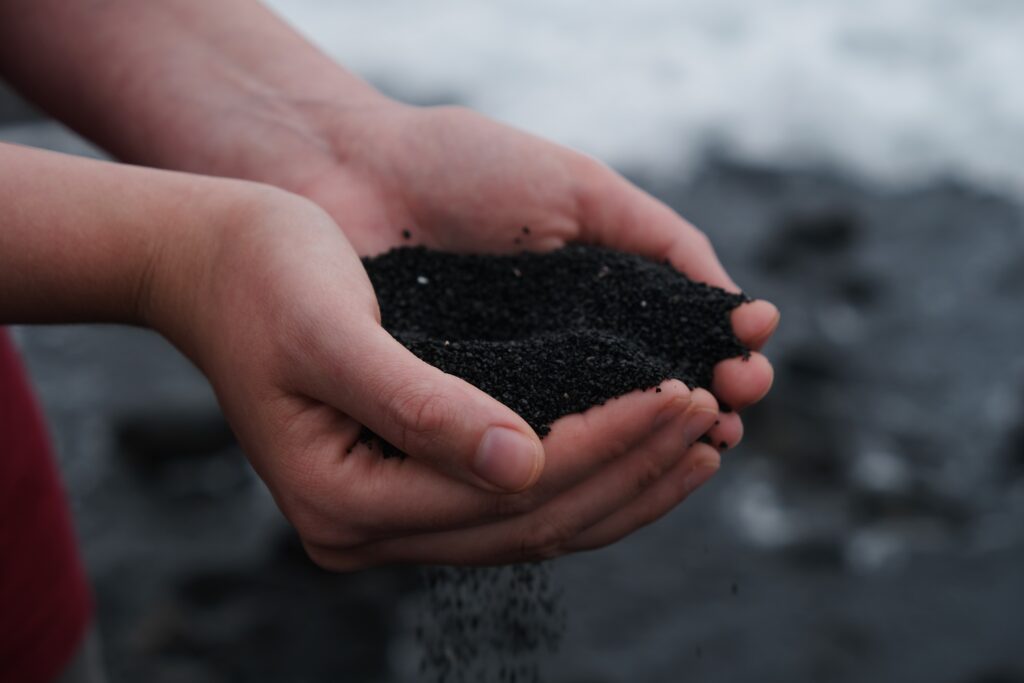
When you have soil that has had plant pests, it’s important to take appropriate measures to prevent the pests from persisting and potentially spreading to other plants. Here are a few options for managing soil that has been infested with plant pests:
- Sterilize the soil: One effective method is to sterilize the soil to eliminate pests and their eggs. This can be done by baking the soil in the oven at a temperature of around 180 to 200 degrees Fahrenheit (82 to 93 degrees Celsius) for about 30 minutes. This process kills the pests and reduces the risk of reinfestation. However, be cautious when using this method, as it may alter the physical properties of the soil and affect its fertility.
- Solarization: Solarization is another technique that utilizes the heat of the sun to kill pests and pathogens in the soil. To solarize the soil, moisten it and cover it with a clear plastic sheet. Make sure the sheet is tightly secured to trap the heat. Leave it in place for several weeks during the hottest period of the year. The heat generated under the plastic will help kill pests, pathogens, and weed seeds.
- Discard or compost the soil: If the infested soil is severely compromised or difficult to treat effectively, it may be best to discard it. Remove the infested soil from the pot or garden bed and dispose of it in a sealed bag or container to prevent the pests from spreading. Alternatively, you can compost the infested soil if you have a hot composting system that reaches high temperatures (above 140 degrees Fahrenheit or 60 degrees Celsius). The heat generated during the composting process will help kill the pests.
- Reuse with caution: If you choose to reuse the infested soil, it’s important to take precautions to prevent the pests from affecting new plants. Consider mixing the soil with fresh, pest-free soil or using it in areas where the risk of pest transmission is minimal, such as non-edible ornamental plants. Monitor the plants closely for any signs of pest activity and be prepared to take immediate action if necessary.
- Soil treatments: There are commercially available soil treatments or beneficial organisms, such as nematodes or beneficial fungi, that can help control certain soil-borne pests. These treatments can be used in conjunction with proper soil management practices to minimize the risk of pest recurrence.
Remember that prevention is key in managing soil pests. To minimize the likelihood of pests infesting your soil:
- Practice good sanitation: Remove fallen leaves, debris, and plant residues regularly to reduce potential hiding places for pests.
- Quarantine new plants: Inspect new plants for signs of pests before introducing them to your garden or indoor space. Keep them separate from existing plants for a period of time to monitor for any signs of infestation.
- Rotate crops: If you have an outdoor garden, practice crop rotation to disrupt pest life cycles and reduce the buildup of pests in the soil.
- Monitor and scout: Regularly inspect your plants for any signs of pests or damage. Early detection can help prevent infestations from spreading and becoming more difficult to manage.
By implementing these measures, you can effectively manage soil that has had plant pests, reduce the risk of reinfestation, and promote healthy plant growth.
How to Prevent Pest Infestations from Happening on my Plants?
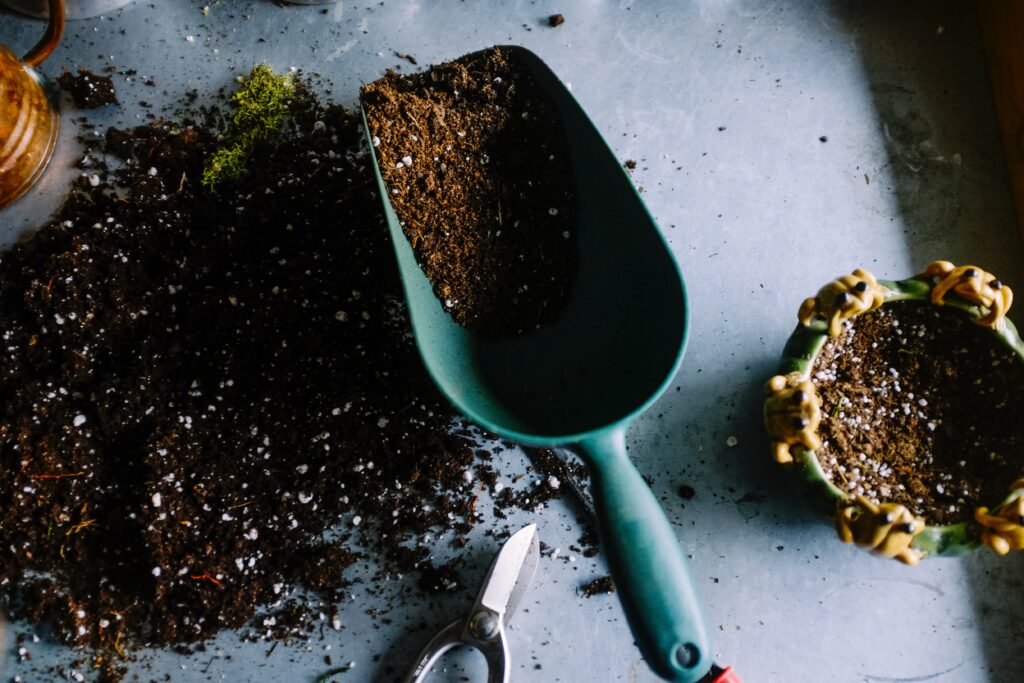
Preventing pest infestations on your plants is key to maintaining their health and minimizing the need for pest control measures. Here are some effective strategies to prevent pests from infesting your plants:
- Choose healthy plants: Start with healthy plants from reputable sources. Inspect them carefully for any signs of pests or diseases before bringing them home.
- Maintain plant hygiene: Keep your plants clean and free from debris. Regularly remove dead leaves, fallen flowers, and any decaying organic matter from around the plants. These materials can attract pests and provide them with a favorable environment to thrive.
- Provide proper plant care: Healthy plants are less susceptible to pest infestations. Ensure your plants receive adequate light, water, and nutrients according to their specific needs. Avoid overwatering, which can create favorable conditions for pests and fungal growth.
- Monitor plants regularly: Regularly inspect your plants for any signs of pests or damage. Look for insects, webs, chewed leaves, or other symptoms of pest activity. Early detection allows for prompt action and prevents infestations from spreading.
- Quarantine new plants: When introducing new plants to your collection, isolate them from existing plants for a period of time. This quarantine period allows you to closely monitor the new plants for any signs of pests or diseases before integrating them with your existing plant group.
- Proper plant spacing: Avoid overcrowding your plants. Providing adequate spacing between plants improves airflow, reduces humidity levels, and minimizes the chances of pests spreading from one plant to another.
- Use clean potting soil: When repotting or starting new plants, use fresh, sterile potting soil or a well-draining mix. Avoid using garden soil, as it may contain pests or diseases that can infest your plants.
- Remove weeds: Weeds can serve as hosts for pests and provide a breeding ground. Regularly remove weeds from your garden or pots to eliminate potential sources of infestation.
- Introduce beneficial insects: Consider using beneficial insects like ladybugs, lacewings, or predatory mites, which can help control pests naturally. These insects prey on common garden pests and can help maintain a balanced ecosystem.
- Practice crop rotation: If you have a vegetable or herb garden, practice crop rotation to disrupt pest life cycles and reduce the buildup of pests in the soil.
- Clean gardening tools: Regularly clean and sanitize your gardening tools to prevent the spread of pests and diseases between plants.
- Avoid over-fertilization: Excessive use of fertilizers can lead to lush plant growth, which can attract pests. Follow the recommended fertilization guidelines for your plants and avoid over-fertilizing.
By implementing these preventive measures, you can create an environment that is less attractive to pests and reduce the likelihood of infestations. Regular monitoring and timely intervention are key to maintaining healthy plants and minimizing the need for chemical pest control methods.
How to know if a Plant is too far gone from a Pest Infestation?
Determining whether a plant is too far gone from a pest infestation depends on several factors, including the severity of the infestation, the health and resilience of the plant species, and your own willingness to invest time and effort into trying to save it. Here are some indicators that a plant may be too far gone:
- Extensive damage: If the pest infestation has caused extensive damage to the plant, such as severe defoliation, wilting, or stem and root decay, it may be challenging for the plant to recover. If the majority of the plant’s foliage or essential structures have been compromised, it may be difficult to revive it.
- Persistent infestation: Despite your best efforts to control the pests, if the infestation continues to persist and spread, it may indicate that the plant is not able to withstand the pressure of the pests or that the infestation has become too severe to manage effectively.
- Weak or unhealthy plant condition: If the plant was already in a weakened or unhealthy state prior to the infestation, it may have a harder time recovering. This is especially true for plants that are already struggling due to factors like poor growing conditions, nutrient deficiencies, or other underlying issues.
- Lack of response to treatments: If you have tried various pest control methods consistently over a reasonable period and have seen no improvement or decline in the plant’s condition, it may suggest that the plant’s health has deteriorated beyond recovery.
- Spread of disease or secondary infections: Pests can sometimes introduce or exacerbate plant diseases, leading to secondary infections. If the infestation has resulted in the development of widespread diseases or infections that are difficult to treat, the plant’s chances of recovery may be diminished.
However, it’s important to note that plant resilience and recovery potential can vary significantly between species. Some plants have remarkable regenerative abilities and can bounce back from severe infestations with proper care and intervention. It’s often worth giving the plant a chance to recover by implementing appropriate pest control measures, adjusting environmental conditions, and providing necessary care.
If you’re unsure whether a plant can be saved, consider seeking advice from a knowledgeable gardener, horticulturist, or plant specialist who can assess the situation and provide guidance based on their expertise. They may be able to provide specific recommendations tailored to the plant species and the severity of the infestation.
Ultimately, the decision to save or discard a plant affected by a pest infestation is subjective and depends on your personal preferences, available resources, and the value you place on the plant.

